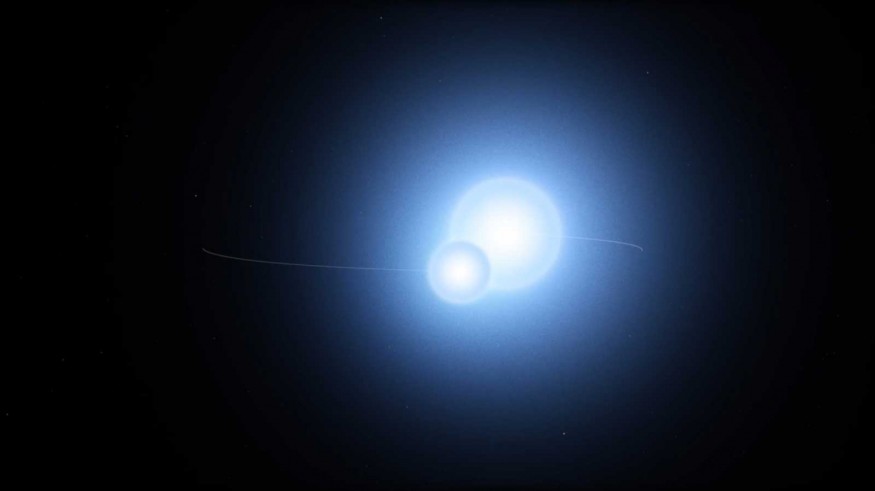A sextuply eclipse sextuple star system has been discovered by astronomers at NASA's Goddard Space Flight Center.
Astronomers refer to a system of six stars as a "Sextuply-eclipsing sextuple star system" when they regularly eclipse one another from Earth's perspective.
Since this six-star system is so far from Earth, telescopes cannot distinguish the individual stars, which merge into a single point of light.
Instead, because of the stars' propensity for often eclipsing one another, astronomers could observe that point of light brightening and fading uniquely.

NASA TESS Help Astronomers Find Six-Star System With Six Eclipses
Since it started looking for exoplanets in the galaxy in 2018, NASA's Transiting Exoplanet Survey Satellite (TESS) has discovered its fair share of shocking finds. But even those findings may not compare to the discovery of the starlight source that was unexplainably blazing and fading some 1,900 light-years away due to its science fiction-like majesty.
The source, TIC 168789840 (also called TYC 7037-89-1), is a system of six stars, claims The New York Times. The sextuplet is made up of three pairs of binary stars, each rotating around a distinct center of mass while staying gravitationally tied to the other two and encircling the galactic center as a single star system, an extremely rare object in and of itself.
There have been a few other six-star systems found, but this one is distinct. From the perspective of NASA's space observatory, it is the first time that the stars in each of those three couples pass in front of and behind one another, eclipsing the other member of their stellar dance ensemble.
Sextuply-Eclipsing Sextuple Star System Joins Renowned Members
The star system joins a club with just three other members, including Castor, a renowned system discovered in 1920, according to the astronomers in an article released Jan. 12 to the arXiv database.
The English clergyman and astronomer James Pound first recognized Castor as a binary system in 1719. Castor has been recognized throughout history as one of the stars in the Gemini constellation. Pound saw the system via a telescope as two light spots danced around one another, just 51 light-years away from Earth.
By 1905, astronomers realized that those two points were actually pairs of stars closely orbiting and revolving around a single central point. By 1920, a different team discovered the third pair of stars revolving around the inner four stars, making the system a total of six stars.
Six-star systems can arrange themselves in several additional ways. For instance, ADS 9731 consists of four light sources that circle a central point. It is a sextuple system since there are two tight binaries among the points of light.
But according to the authors (per Live Science), TIC 168789840 is most similar to the famous Castor system.
How The 'Sextuple' Star System Works
According to Forbes, astronomers may better understand how the primary and secondary stars in TYC 7037-89-1 got so similar and how the three systems came to be gravitationally connected using the data.
It could provide astronomers with a new perspective on the emergence, dynamics, and development of various star systems.
The first known sextuple star system where TESS may observe the stars alternately passing in front of one another is TYC 7037-89-1. Binary star pair A, pair B, and pair C are the three pairs that exist.
Pairs A and Pair C (inner) orbit one another every 1.6 and 1.3 days, respectively. This "inner quadruple system's two pairs orbit one another every four years. The two stars in pair B (outer) orbit the internal systems collectively every 2,000 years, revolving around each other every 8.2 days.
A major star and a secondary star make up each pair. The Sun is roughly as huge, massive, and hot as the main stars in each of the three binaries in TYC 7037-89-1. The size and temperature of the secondary stars are all around half that of the Sun.
The star couples are so identical to one another that experts call them "triplets."
RELATED ARTICLE : First-Ever Exoplanet Discovered 30 Years Ago Around a Rotating Star Is an Extraordinarily Rare Pulsar
Check out more news and information on Space in Science Times.











